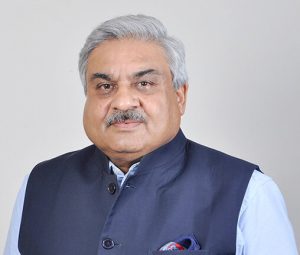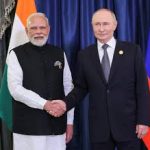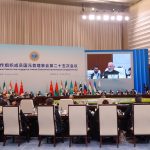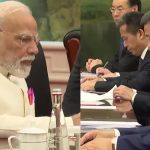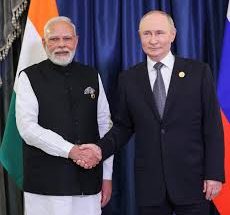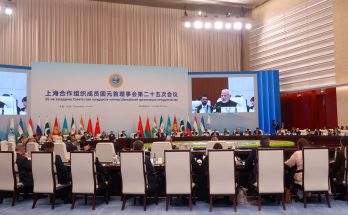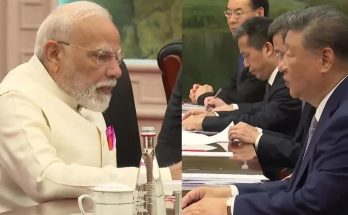Malaysia will host the 47th Asean Summit and East Asia Summit from October 26 to 28, bringing together leaders from across Southeast Asia and key dialogue partners. Against the backdrop of geopolitical turbulence unleashed by trade wars, the leaders of the region will discuss ways to discuss regional cooperation, boosting economic growth and current security challenges.
India’s Prime Minister Narendra Modi will not attend in person but address ASEAN leaders virtually in which he will underscore New Delhi’s commitment to stronger ties with the 11-nation bloc and highlight the imperative to shape a balanced regional and world order.
In this conversation with Manish Chand, CEO, Centre for Global India Insights and India Writes Network, Amb. (Retd.) Anil Wadhwa, former secretary (East) in India’s Ministry of External Affairs speaks about India’s key priorities and interests vis-à-vis the ASEAN and related summits in Kuala Lumpur. Amb. Wadhwa, who served as India’s ambassador to Thailand, Italy and Oman, also highlights ways to enhance economic and strategic partnership between India and ASEAN.
(Excerpts from the interview)
Q) Prime Minister Modi will not attend the ASEAN summit in Malaysia in person, but he will deliver an important address to the leaders of ASEAN countries virtually. What will be key messages from PM Modi’s virtual address? How do you look at India’s role in ASEAN and the larger region?
A) Malaysia as the chair of ASEAN is seeking to ensure the centrality of the grouping’s role in the region while focusing on stability and economic growth for ASEAN countries. India will look to rejuvenate its economic and strategic ties with the region. India will also focus on recalibrating its relations with major powers such as the US and China.
For India, maritime security is a key focus area. India has proposed 2026 as the ASEAN-India Year of Maritime Cooperation. This underlines India’s role in ensuring freedom of navigation, sustainable fishery, and regional disaster management. There is also a shared anxiety that India has with the ASEAN countries over China’s assertiveness in the South China Sea. ASEAN states, therefore, also see some value in India’s wide capacity building and support its non-provocative naval presence. They also support India’s continued funding for joint capacity building projects and coastal security workshops that it carried out in the past.
Let’s recall what has happened between India and ASEAN as far as trade and investment is concerned. Since 2022, we have seen that there’s been a review and an attempt to modernize the ASEAN-India Trade and Goods Agreement. The aim is to do this by 2025.
India-ASEAN trade was about $123 billion in 2025, and bilateral investments were about $156 billion from ASEAN into India and about $56 billion dollars from India into ASEAN. But these are largely concentrated in Singapore; so, there is a need for diversification there.
India would also like to make sure that in future, once the trade review is completed, the focus shifts to tariff simplification and digital trade facilitation, e-commerce, liberalization of services, and integration of value chains in the emerging sectors like electronics and EV components and pharmaceuticals.
India also wants ASEAN’s involvement in its Production-Linked Incentive schemes. India is looking to attract more investment from ASEAN in areas like electronics, solar modules, and pharmaceuticals so that it can strengthen its supply chains with the grouping.
Now this has become very necessary because India is not part of the RCEP or the CPTTP and the current Trump administration seems to have abandoned further progress under IPEF countries of the region.
Connectivity is an important focus area. Here both the flagship projects of India in ASEAN – the India-Myanmar-Thailand tri-lateral highway and the Kaladan multi-modal project – suffered because of instability which has happened in Myanmar and now in Bangladesh.
Going forward, India will focus more on payment interoperability and digital public infrastructure partnerships. It would also look to find new synergies in India’s Indo-Pacific Ocean Initiative and the ASEAN Outlook on Indo-Pacific. That includes things like defence exercises and sponsoring coastal defence, maritime domain awareness and intelligence sharing with countries which are like-minded like Indonesia, Singapore and Vietnam.
India would look for cooperation in areas like green energy, disaster management and this is all supported by the Indian government funds. This time we will see some new announcements of quick-impact projects, quick-impact development projects, initiatives on solar energy and also maritime cooperation.
Q) What do you think would be major outcomes of the summit in Kuala Lumpur?
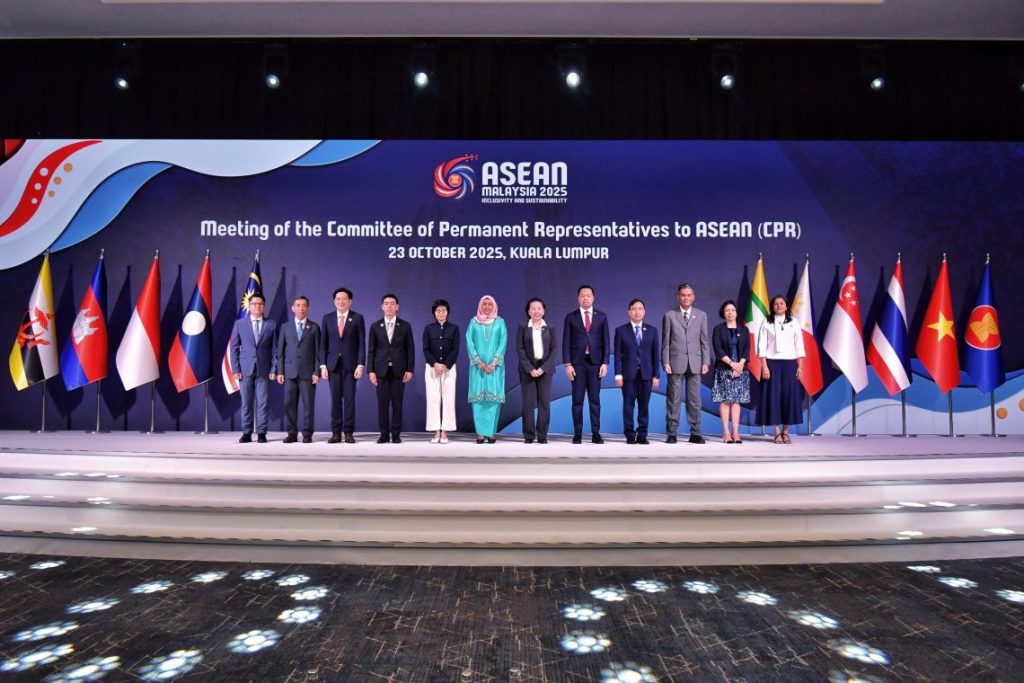
A) The focus of this summit is to bring about stability, political stability as far as ASEAN itself is concerned and to do as much as possible for economic recovery. Why this is important now is because most of the ASEAN states have suffered somewhat from the tariffs that the Trump administration has imposed on them, they are all export-oriented economies and for them to recalibrate becomes very important. Mutual cooperation, therefore, becomes that much more important. They will look for outside support to shore up their economies because they cannot afford their trade and investments to suffer, many of them depend on this as the sole means by which to keep the economy going. The other issues on the agenda will be enhancing connectivity within ASEAN, issues related to the common market and the new-age economy developments. ASEAN would like to make further progress in all these areas.
Q) ASEAN and East Asia region has emerged as a theatre or an arena for geopolitical rivalry between US, China and other powers. This time around President Donald Trump will be there. This will put spotlight on the American role in the region as well. How do you look at Trump’s participation in the East Asia Summit? What are the implications of the US-China rivalry for the region?
A) The focus for President Trump seems to be a meeting with President Xi Jinping, on the sidelines of the APEC Summit (October 31-November 1. Apparently, President Trump is not going to stay for the main APEC Summit; he is focused very much on what happens in that meeting with Xi Jinping on the first day.
As far as East Asia Summit is concerned, Trump will preside over a signing ceremony, a peace ceremony between Thailand and Cambodia and then he flies off to Japan. This means that the Japanese, the newly appointed Japanese Prime Minister will have to fly back to Japan as well to host him.
The focus seems to be very much on finding that equilibrium with China and that has become important because there is an issue with regard to tariffs and technology trade which could potentially actually unsettle the ASEAN partners also who are now becoming quite wary of the US unpredictability. This recalibration between the US and China has become necessary because they are both grappling for the race for artificial intelligence, for microchips and fusion energy.
Given all this, I think there is a certain amount of unpredictability on what the US’ role is going to be going forward as far as the ASEAN countries are concerned and their presence and actions in the Indo-Pacific are concerned.
Q) India is now the world’s fourth or fifth largest economy, depending on how you calculate. Many ASEAN countries look at India as some sort of balancer. Do you think India can play a bigger role in the geopolitical sense as a net security provider as a balancer of sorts?
A) In the current scenario, India is seen as a steady and autonomous partner. India has become more valuable to both ASEAN and other regional actors like Japan and Australia. At Kuala Lumpur, India’s objectives would be to just reinforce the maritime trust and maintain a strategic balance and that aligns itself with the instincts of the region with stability.
India can play a much larger role, but India will have to take some initiatives for this purpose. My view is that lately we have seen very few initiatives that have been taken by India which sort of puts it in the forefront. India needs a bigger economic presence in the region. It has to look once again at ways and means in which it can collaborate with ASEAN partners, especially in creating value chains.
Q) According to some analysts, the economic partnership between India and ASEAN is performing way below potential. There is so much more the two sides can do especially in terms of trade and investments. ASEAN investment in India are not all that great and needs to be scaled up. How do you look at the future of India-ASEAN economic partnership and what are the new frontiers we could be looking at?
A) It is important that ASEAN also looks at India for investments in its PIL schemes. There are some new areas in which India and ASEAN can collaborate and those investments can lead to much more trade going forward.
One can of course argue that ASEAN looks for investments in its own countries and not so much investments from outside but I think Singapore has proved that this is a contrarian view which succeeds.
For example, Singapore has been a very successful investor into India and similarly India has invested quite a bit in the Singapore economy. What we need to do is replicate the Singapore model in other countries like Indonesia, Malaysia and Vietnam which can actually lead to much more diversification and creation of more value chains.
India is not integrated enough into the ASEAN economies and vice versa and if you compare what India has done to what the Chinese economy has done in ASEAN states you will find that there is much more integration and that sort of helps in terms of crisis situation that has happened now in days of tariffs where diversification is the key. Many countries are dependent on China for getting sourcing of critical components.
Q) What are your suggestions for deepening strategic content of India-ASEAN partnership?
A) India should look at some new areas. Digital connectivity is the foremost area to look at. Green energy is another promising area. India has taken significant initiatives in solar energy and there is scope for more collaboration with ASEAN states in this area. In maritime cooperation, India needs to do much more in terms of bolstering surveillance capabilities in the ASEAN states.
Author Profile

- Manish Chand is Founder and Editor-in-Chief of India Writes Network (www.indiawrites.org) and India and World, a pioneering magazine focused on international affairs. He is CEO, Centre for Global India Insights, an India-based think tank focused on global affairs.
Latest entries
 India and the WorldOctober 25, 2025Malaysia Summit: India can play a bigger role in ASEAN: Anil Wadhwa
India and the WorldOctober 25, 2025Malaysia Summit: India can play a bigger role in ASEAN: Anil Wadhwa India and the WorldOctober 2, 2025With US frowning, India to host Putin in December
India and the WorldOctober 2, 2025With US frowning, India to host Putin in December India and the WorldSeptember 1, 2025Tianjin boost for India: SCO rises against cross-border terror
India and the WorldSeptember 1, 2025Tianjin boost for India: SCO rises against cross-border terror India and the WorldAugust 31, 2025Message from Modi-Xi meeting: It’s the right choice to engage and be friends
India and the WorldAugust 31, 2025Message from Modi-Xi meeting: It’s the right choice to engage and be friends


